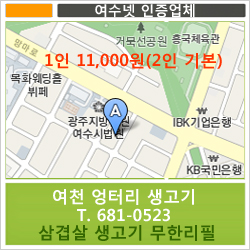흥국사
1195년(고려시대) 보조국사에 의하여 창건된 호국불교의 성지로서 임진왜란 때 승병의 훈련 장소로서 이용되었는데 현재는 보물3점, 지방문화재 3점, 문화재자료 38점이 있다.
국가가 흥하면 절도 흥한다고 하는 기원을 기우려 흥국사라는 이름을 붙였다고 전해지고 있다.
영취산의 계곡을 흐르는 맑은 물은 지역 사람들의 휴식처로서 사랑을 받고 있다.
1987년 심검당(尋劍堂) 해체 보수시 상량문이 발견되었는데 그 상량문 내용에는 승군이 수군에 종사한 내용과
활동상황이 자세하게 기록되어 있다.
* Hungguksa temple (National Historic Site No. 38 )
The temple was used as the training yard of the Voluntary Monks navy during the Japanese invasion to Korea in 1592
and became the headquarter of the Monk army. It has earned a due fame among the Korean people. It was originally built by Buddhist priest Bojo in 1195 (25th year of king Myungjong's reign of Koryo Dynasty). There are 3 pieces of national treasures, 3 pieces of local cultural assets, and 38 pieces of ancient documents. The temple was given the name Hungguk(meaning prosperity of the country) in hopes that it would prosper along with the country. The clear waters of the picturesque Mt. Youngchwi valley attracts more and more tourists every year.
* 興國寺
1195年(高麗時代)普照國師によって 創建された 護國佛敎の 聖地. 壬辰倭亂のとき, 僧兵の 訓練場に 利用した 寺で, 現在, 寶物3点, 地方文化財 3点, 文化財資料 38点がある.
國家が隆盛したら 寺も隆盛するという 念願を かなえて 國を 興す寺という意味で 興國寺と 名つけられたと ?えられている. 靈鷲山の 溪谷を ながれる 淸水は, 地域人達の 休息場として 愛されている. 1987年 尋劍堂を解?, 補修する時に 上樑文が 發見されたが その內容には 水軍として 戰った 僧軍の 役割と活動が 詳しく 記されている.
* 興國寺
1195年(高麗時代)以普照國師創建的護國佛敎聖地,壬辰倭亂時,被利用於僧兵的訓練場所,現在有寶物3点,地方文化祭3点,文化財3点,文化財資料38点.
根?古話,國家隆興寺也會興盛,願望寺興盛.所以取名爲興國寺,靈鷲山的溪谷利用於地區人民休息地,受到許多地區人民的愛戴.



















